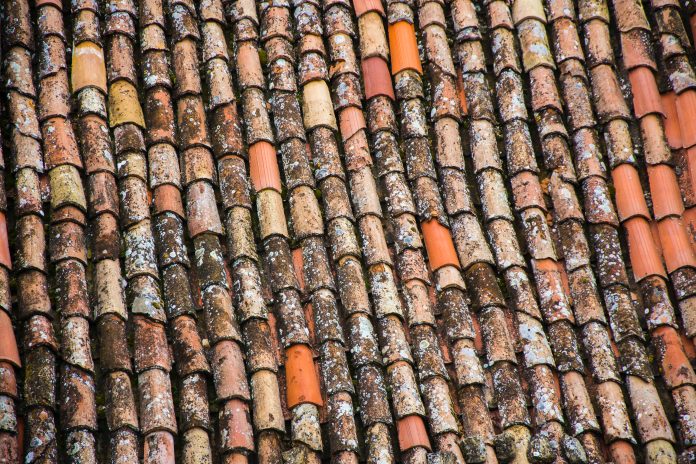When it comes to protecting your home in Atlanta, GA, it is essential to be aware of the potential risks that can compromise the integrity of your roof. Colony Roofers, serving Atlanta, GA, understand the importance of a well-maintained roof and are here to shed light on why roof damage happens in the first place. By gaining a deeper understanding of these causes, you can take proactive measures to safeguard your property and ensure the longevity of your roof. Whether you’re a homeowner, a business owner, or simply interested in the subject, this exploration of roof damage will provide valuable insights into this crucial aspect of building maintenance. Let’s delve into the intricacies of roof damage and uncover the reasons behind its occurrence.
Table of Contents
Age and Wear
One of the primary reasons for roof damage is the natural aging process and wear over time. Roofs have a limited lifespan, which varies depending on the type of materials used and the quality of installation. Asphalt shingle roofs, the most common roofing material, typically last around 20 to 30 years. Other materials, such as metal or tile, can have longer lifespans.
As roofs age, they become more susceptible to damage. The constant exposure to sunlight, rain, wind, and temperature fluctuations gradually weakens the roofing materials. Shingles may curl, crack, or lose their protective granules. The roof’s ability to repel water diminishes, making it vulnerable to leaks and water damage. Regular inspection and maintenance become crucial to identify signs of aging and address them before they escalate into severe problems.
Extreme Weather Conditions
Another significant factor contributing to roof damage is exposure to extreme weather conditions. Depending on the geographical location, roofs can face various challenges, including:
- High Winds: Strong winds can uplift or loosen shingles, causing them to break, tear, or detach completely. Wind-driven debris, such as tree branches or flying objects, can also puncture the roof surface.
- Heavy Rain and Snow: Excessive rainfall or snow accumulation can put stress on the roof structure, leading to leaks, water seepage, and ice dam formation. Water infiltration can damage the underlying layers and insulation and even compromise the structural integrity of the roof.
- Hailstorms: Hail can cause significant damage to roofs, especially those with asphalt shingles. It can create dents, cracks, or punctures, compromising the roof’s waterproofing abilities and exposing it to further deterioration.
- Heat and UV Radiation: Prolonged exposure to intense heat and ultraviolet (UV) radiation can accelerate the aging process of roofing materials. This can result in the deterioration of shingles, the breakdown of sealants, and the loss of color and protective coatings.
Lack of Maintenance
Neglecting regular roof maintenance can hasten the occurrence and severity of roof damage. Many homeowners underestimate the importance of inspections and routine maintenance, which can help identify minor issues before they escalate into major problems.
Failure to clean debris, such as leaves, branches, or moss, from the roof can lead to water pooling, clogged gutters, and potential water damage. Blocked gutters can cause water to overflow onto the roof, leading to moisture infiltration and rotting of the underlying materials.
Moreover, failure to address minor leaks promptly allows water to penetrate the roof’s layers, leading to the deterioration of the decking and insulation and potentially causing mold growth. Regular inspections and maintenance, including repairing damaged shingles, sealing gaps, and ensuring adequate ventilation, are essential for preserving the roof’s integrity.
Improper Installation and Substandard Materials
Roof damage can also occur due to subpar installation practices and the use of inferior materials.Hiring inexperienced or unqualified roofing contractors in Kansas city can result in improper installation, leading to various issues.
For instance, incorrect shingle fastening can cause an uplift during wind events, leading to shingle displacement and subsequent leaks. Inadequate or improper flashing installation can allow water to seep into vulnerable areas, compromising the roof’s waterproofing.
Using low-quality materials or opting for cheaper alternatives may initially save costs but can lead to premature roof deterioration. High-quality materials and professional installation may come at a higher price but offer longer-lasting protection and reduce the likelihood of damage.
Tree Damage and Debris
The presence of trees near a house can pose a risk to the roof’s integrity. Overhanging branches can scrape and damage shingles during strong winds. Falling branches during storms can puncture the roof surface, leading to leaks and structural damage. Additionally, leaves, twigs, and moss accumulation on the roof can retain moisture, promoting the growth of mold and algae, which can deteriorate the roofing materials.
Understanding the factors that contribute to roof damage is essential for homeowners to take proactive measures to protect their roofs and prevent costly repairs. By being proactive and addressing issues promptly, homeowners can ensure their roofs remain robust, durable, and capable of protecting their homes for years to come.
















